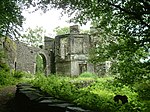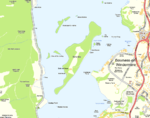Blackwell (historic house)

Blackwell is a large house in the English Lake District, designed in the Arts and Crafts style by Baillie Scott. It was built in 1898–1900, as a holiday home for Sir Edward Holt, a wealthy Manchester brewer. It is near the town of Bowness-on-Windermere with views looking over Windermere and across to the Coniston Fells. Blackwell has survived with almost all its original decorative features intact, and is listed Grade I as an outstanding example of British domestic architecture. The house is furnished with original furniture and objects from the period. The gardens were designed by Thomas Mawson in a series of terraces. Flowers and herbs border the terraces, which form sun traps on the south side of the house. The house has been open to visitors since 2001 and hosts regular exhibitions including work by living artists such as Edmund de Waal in 2005. It won the Small Visitor Attraction Award in the Northwest of England for 2005. The house is managed by the Lakeland Arts Trust.
Excerpt from the Wikipedia article Blackwell (historic house) (License: CC BY-SA 3.0, Authors, Images).Blackwell (historic house)
B5360, South Lakeland Windermere
Geographical coordinates (GPS) Address Phone number Website External links Nearby Places Show on map
Geographical coordinates (GPS)
| Latitude | Longitude |
|---|---|
| N 54.3431 ° | E -2.9236 ° |
Address
Blackwell (Blackwell, The Arts & Crafts House)
B5360
LA23 3JT South Lakeland, Windermere
England, United Kingdom
Open on Google Maps











